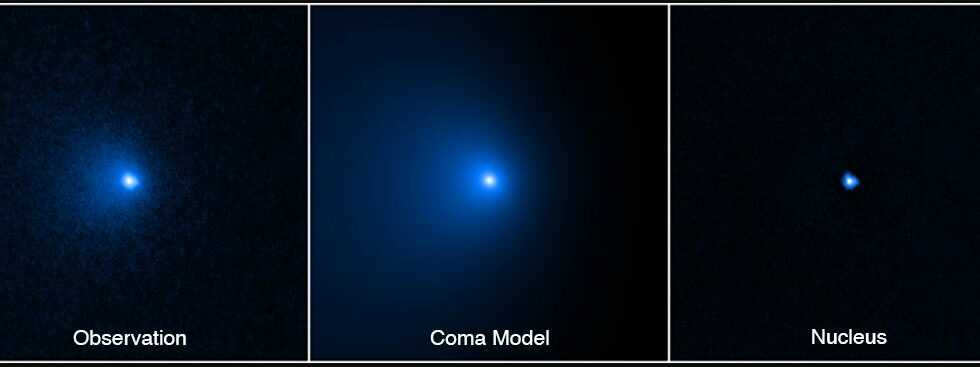Very far from the Sun, comet Bernardinelli-Bernstein is much more impressive than its better known cousins and closer to us. Thanks to hubble telescope and through a series of simulations, a science team was able to isolate the size and mass of its central core. It will approach until 2031.
This comet is also an ancient vestige of the genesis of the Solar System!
Comets on the horizon
Comet C/2014 UN271 was officially discovered in 2014, when astronomers Pedro Bernardinelli and Gary Bernstein observed archival images from the Inter-American Cerro Tololo Observatory in Chile.
It is a distant comet which already emits a lot of gas despite its considerable distance from the Sun. Indeed, it will not come as close as possible (1.6 billion kilometers) to it until 2031! It is therefore useless, as some articles claim, to write that it is heading towards the Earth: this is not the case.
” It is a special object, given its activity while it is so far away. We thought the comet itself must be massive, but we needed better data to confirm that. explains the lead author of the study, Man-To Hui (University of Macau). So it was Hubble that took the pictures.
Simulation, configuration, comparison
With these 5 images captured on January 8, there was still half the work to be done to get a good idea of the size of the comet’s nucleus. Indeed, at this distance, it is too small to be resolved by Hubble. So what to do?
The method requires software simulations that are as faithful as possible, a comet model that the team has made “stick” with the images from the space observatory. However, with the brilliance of the gases and dust ejected in the “tail” of the comet, their quantity and the size of what emerges from the nucleus, it is possible to estimate the size of the latter (by varying the parameters of the simulation, we constrain the real size of the kernel). This is how the team concluded that it was about 80 miles (129 kilometers) in diameter and that its final mass must have reached 500,000 billion tons.
We’ll meet in 3 million years at the Place des Grands Hommes
Blacker than coal, Bernardelli-Bernstein is therefore the most imposing comet that has ever been discovered so far. For comparison, Haley’s famous comet measures just over 11 kilometers in diameter.
The team estimates the temperature that currently surrounds it at -211°C… A temperature, however, sufficient to gently melt its dry ice. In addition, its orbit is particularly distant. According to current estimates, it takes about 3 million years to complete a single lap around the Sun. The comet indeed navigates a good part of its time within the Oort Cloud (or Oort Cloud), a region within which the distribution of objects and masses is still debated. Blame it on the difficulties of observing anything there.
Comets like C/2014 UN271 were not formed there, but were ejected from the nearby Solar System during the early years of the formation of giants such as Jupiter or Saturn.
On the same subject :
Hubble succeeds in observing the formation of a particular exoplanet, over 13 years of measurements
Source :NASA

0